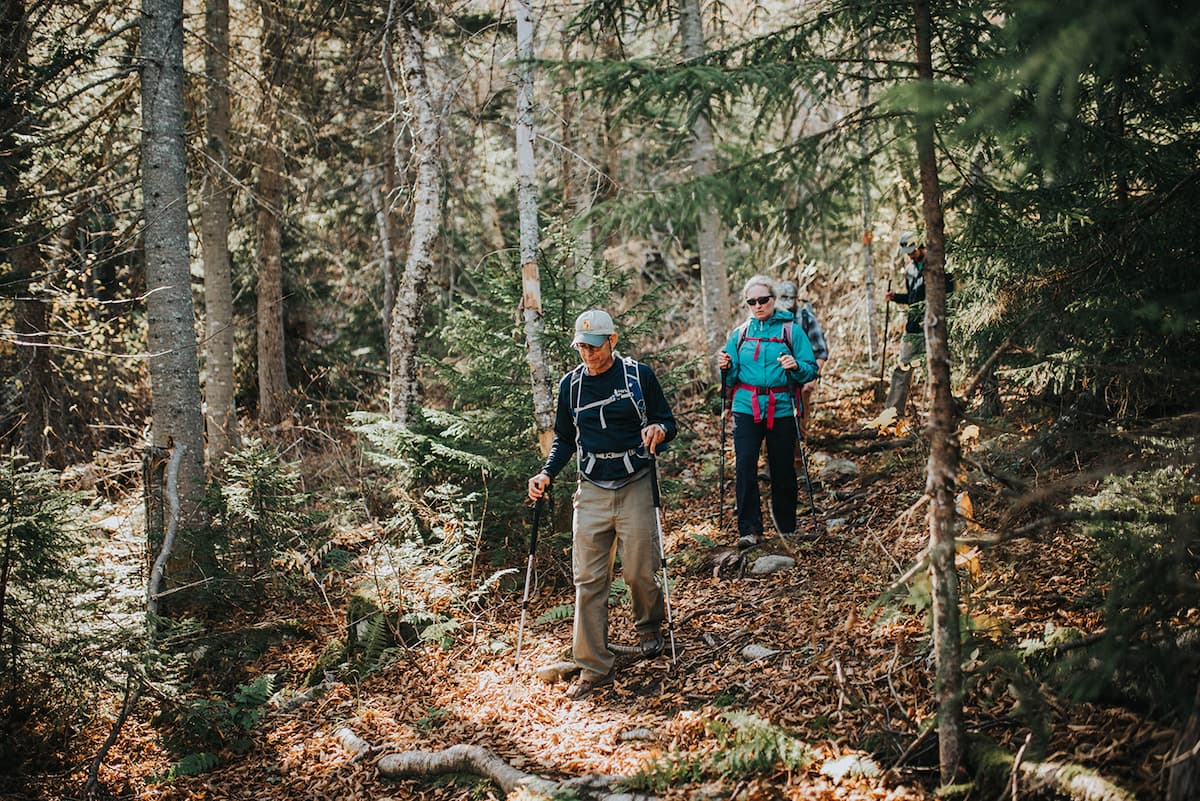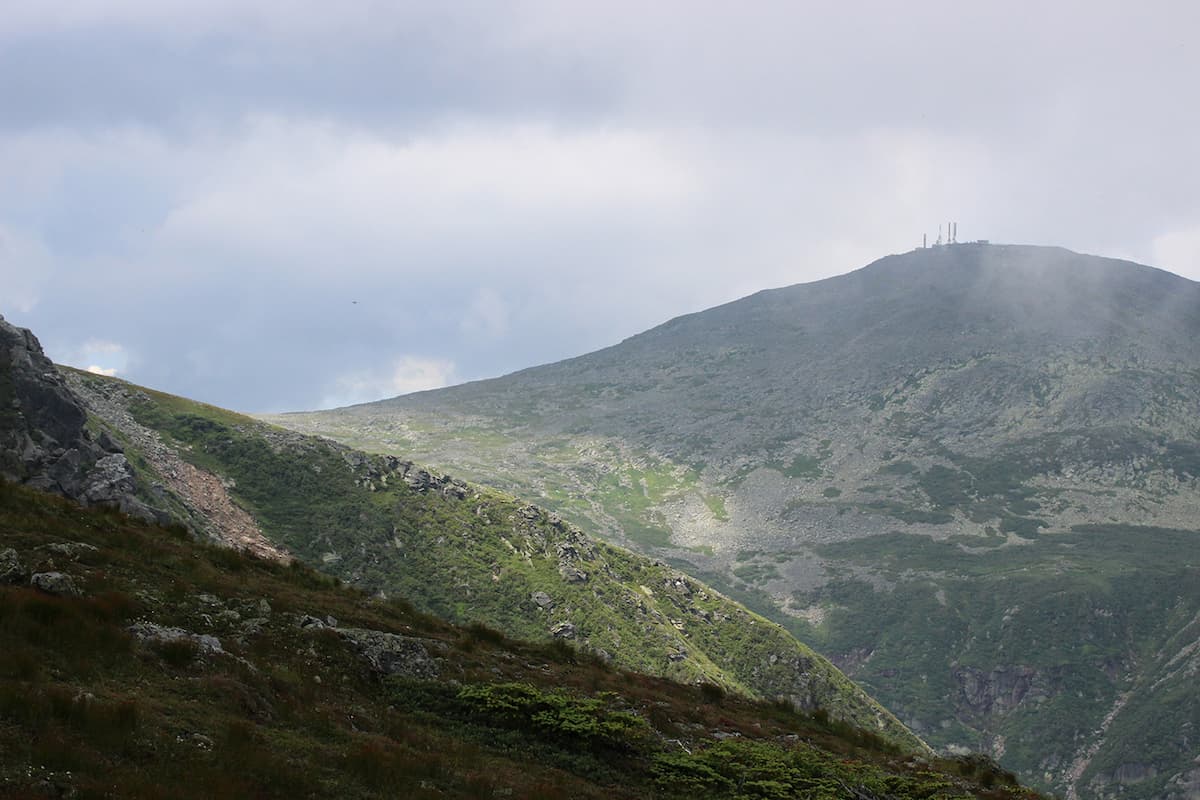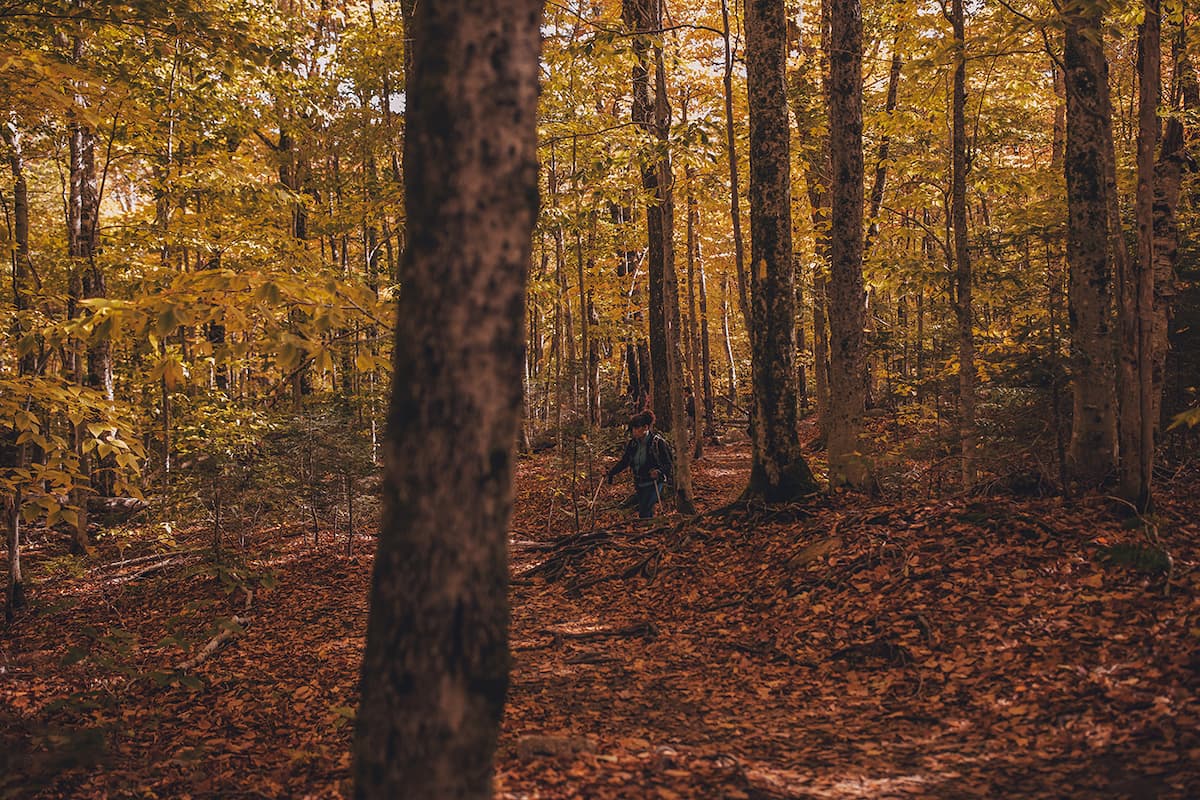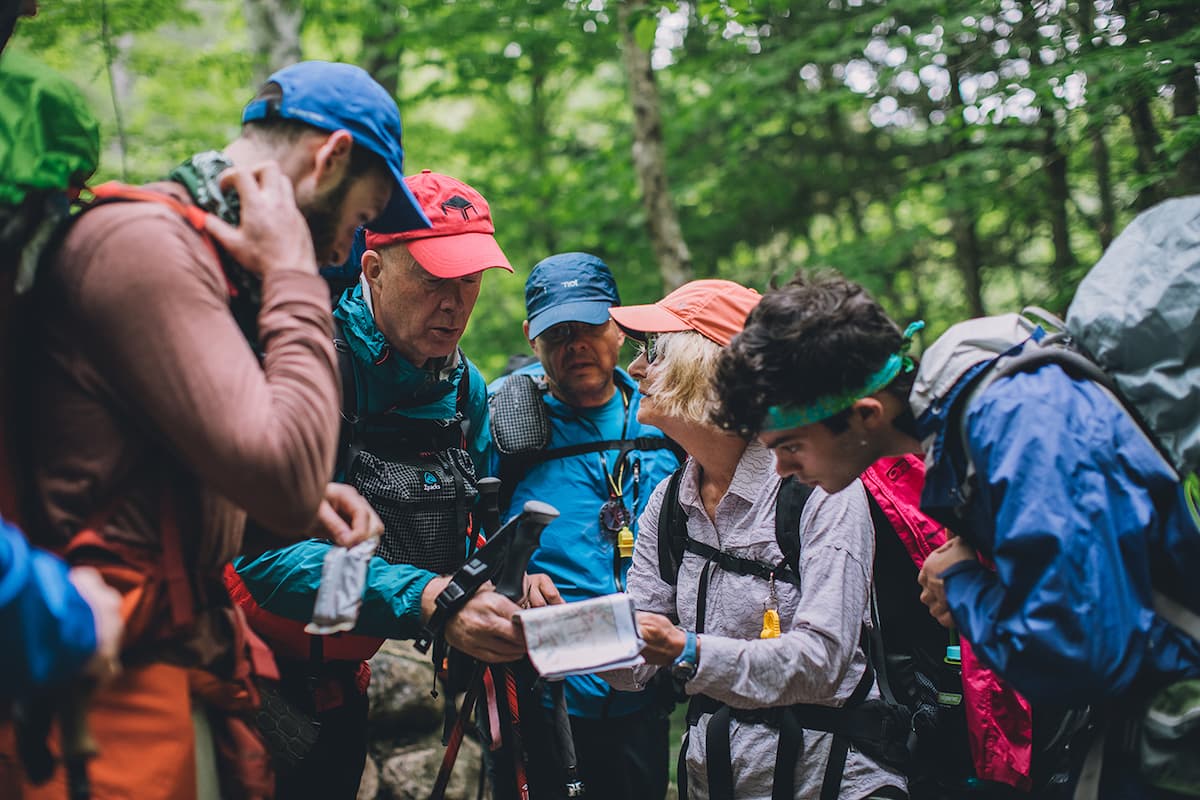Avoid These Common Beginner Hiking Mistakes

We’ve all been there. Every hiker, whether they’ve summited all 48 of New Hampshire’s 4000 footers or even completed the Appalachian Trail, starts out as a beginner. As you work your way up from pond hikes to summit ascents, you pick up plenty of skills and know-how along the way. You’ll probably even make a few mistakes, but we’re here to help with that. We’ve compiled a list of the most common mistakes beginner hikers make—and how to avoid them.
Planning a Hike That’s Too Ambitious
If you’re like me, you might be drawn to hiking because you want to experience the solitude of the backcountry or test yourself against rugged terrain. You’ll get there! However, when you’re just starting out it’s best to take it slow. It’s so easy to underestimate how challenging and downright exhausting traversing steep terrain or a day-long hike can be. Not only can you put yourself in a dangerous situation, overextending yourself really takes away all the fun.
Start out with hikes that are about 2 to 3 miles round trip and either have minimal or very gentle elevation gain. Take your time and work your way up to hikes that have more miles and climb higher. This gives you the chance to build your fitness and gain valuable skills, such as knowing what gear to bring and how navigate using a topographical map. If your goal is to reach the Northeast’s high peaks, check our guide on how to go from the couch to a 4000-footer.
Taking it slow means that any mistakes will have much lower stakes. Whether it’s not bringing enough water, wearing the wrong shoes, or even forgetting a map, you’ll be grateful you did it when you’re just a relatively flat mile from your car and not halfway up a mountain.
If all this sounds boring or discouraging, you should know that there are plenty of short and relatively easy hikes in the Northeast that offer gorgeous views and scenery. Unsure of where to start? AMC offers a variety of guided programs for individuals, families, and even teens that teach valuable outdoor skills and offer a safe introduction to the backcountry.

Not Checking the Weather Before a Hike
Bad weather can ruin a hike and even put you in danger, so always check the forecast for the area you’ll be hiking. Knowing the weather will also help you plan a successful trip, including when to hit the trail and what gear to bring. This is especially true in winter, when cold temperatures, and snow and ice can seriously impact your hike.
As you work your way up to hiking in higher elevations, keep in mind that the weather at the base of a mountain can be dramatically different from the summit. For example, at the base of Mount Washington it may be 75 degrees Fahrenheit and sunny, but 4,000 feet higher at the summit it could be 40 degrees and cloudy with wind gusts up to 50 miles per hour. These “alpine areas” usually have their own weather forecasts that you should check as well.
When in doubt, just use common sense. Thunderstorms or subzero temperatures in the forecast? Pick another day to hike. If the weather takes an unexpected turn for the worse when you’re already on the trail, don’t hesitate to turn back. You can always go out another day.
Wearing the Wrong Clothing
When you hit the trail, you’ll want to make sure you have the appropriate clothes and footwear to ensure your hike is safe and comfortable. Choose clothes made of wool, fleece, polyester, nylon, or polypropylene. These kinds of fabrics are breathable and wick sweat away from your body. Steer clear of fabrics like cotton and denim that absorb sweat and moisture, and also dry slowly. Not only is hiking in damp clothes uncomfortable, it also puts you at risk for hypothermia when it’s cold.
What you wear on your feet is even more important. Choose shoes with a supportive footbed, such as hiking boots or a pair of sturdy sneakers with ankle support. Thought it might be tempting, don’t wear flipflops or sandals. The lack of footbed and ankle support means you’re much more likely to hurt yourself while wearing them, and they’ve also been known to break.
Something else to consider is that your feet expand as you hike so don’t wear any shoes that feel tight. You should also leave enough room for a thick pair of socks for hiking in colder temperatures or for comfort other times of the year. Even during summer, I still wear thick wool socks since they keep my feet dry by wicking away moisture.
Lastly, don’t forget to break in any new hiking shoes before you head out on a longer hike. This will loosen them up, preventing discomfort and blisters. Your feet will thank you!

Assuming Getting Help or Amenities Will Be Easy
When you’re hiking in remote areas, or even just your local town preserve or state park, you shouldn’t plan on having access to bathrooms or places to buy food or refill your water bottle. If you get lost or injured, help can be many hours away.
Take the time to plan your route carefully, so you know in advance how long your hike will take and what terrain you’ll encounter. Be sure to pack the appropriate gear, including the Ten Essentials and supplies for when nature calls. You should also make a plan for what to do if you, or someone in your group, gets lost or hurt.
Not Bringing Enough Food and Water
No matter how long your hike is, make sure to pack enough water to stay hydrated and enough food to keep your energy levels up. Bring at least 32 ounces of water (one liter) on an easy 2-mile hike and at least 64 ounces (two liters) or more on a longer hike. When it’s hot, you’ll want to pack extra to replenish what you sweat out. And of course, remember to drink it!
When you’re packing food for your trip, go for options that are easy to eat and will keep your body energized. Think sandwiches, nuts, and energy bars. Salty foods are also great for replenishing the salts you lose when you sweat.
Figuring out what food, and how much, keeps you energized on the trail can take time. So, start experimenting with different snacks on shorter hikes so you’ll know exactly what to pack when you head out on a big adventure.

Not Learning How to Use Important Gear
You’ll find gear like a map and compass at the top of just about every gear list for hiking, but they’re useless if don’t know how to use them. Navigating this way is a vitally important skill that you should take the time to learn. If doing it on your own feels intimidating, AMC’s outdoors guides and local chapters offer a variety of classes on how to use a map and compass.
The same goes for pieces of potentially lifesaving gear for advanced winter hiking like an ice ax or an avalanche beacon. If you’re researching a hike that recommends this gear and you don’t know how to use it, pick a different hike. You can learn how to use this kind of gear, along with other important avalanche and winter safety skills, at AMC offered courses and guided trips.
Don’t Get Burned
A bottle of sunscreen, a hat, and sunglasses might seem more at home in your beach bag, but you should also have them in your hiking pack. You can get a sunburn even through tree cover, and UV rays are even harsher on your skin and eyes at higher elevations.
There’s plenty of adventure to be had on the trail. One of the most fun and challenging is learning the skills and building the fitness you’ll need to take on any hike you choose. Above all, never been afraid to take it slow, turn around, or ask for help.




